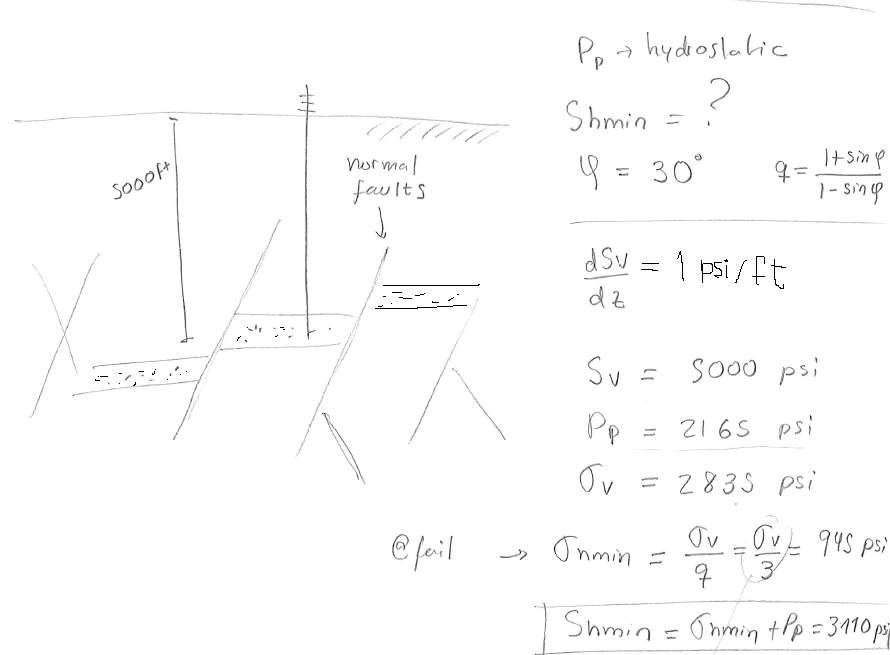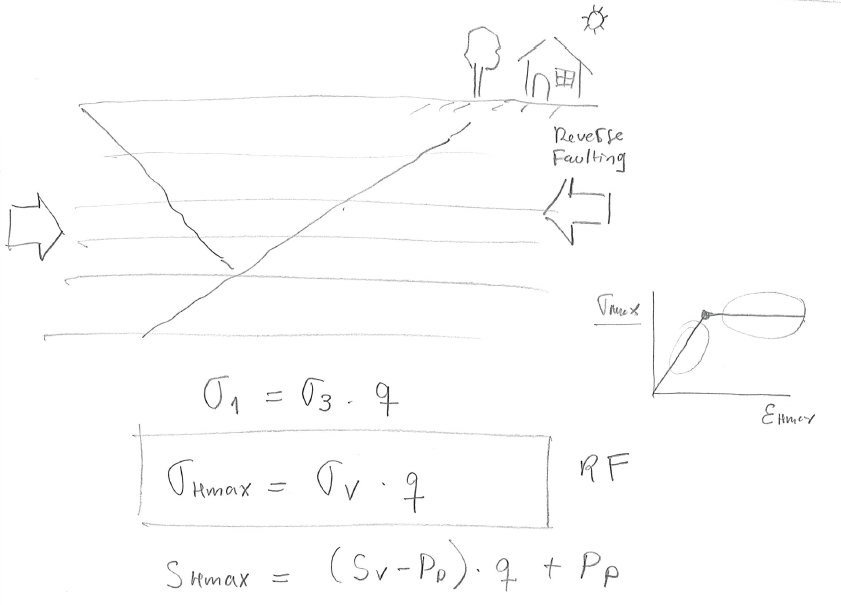Next: Determination of stress regime Up: Applications Previous: Critically stressed fractures and Contents
Tectonic plates drive movements of the Earth's crust (Fig. 5.25). High temperatures and high effective stresses at great depth favor ductile deformation. Low temperatures and low effective stresses in the near-surface favor brittle failure.
![\includegraphics[scale=0.55]{.././Figures/split/6-21.pdf}](img627.svg) |
As a result of ubiquitous shear failure and faulting of the Earth's shallow crust, friction equilibrium limits the maximum magnitude of stresses imparted by tectonic strains. The limit is proportional to the frictional strength of faults. Because faults are cohesion-less, the frictional strength equation is simply:
 |
(5.14) |
(like sand, zero-intercept in the y-axis) where 

![$q=[1+\sin(\varphi)]/[1-\sin(\varphi)]$](img629.svg)
 cannot be smaller than
cannot be smaller than
 , for
, for
 cannot be greater than
cannot be greater than
 , and for
, and for
 cannot be greater than
cannot be greater than
 .
.
As a result, the assumption of limit frictional equilibrium permits estimating minimum and maximum horizontal stresses if effective stresses


PROBLEM 5.13: A given site onshore is known to be subjected to a NF stress regime and hydrostatic pore pressure. Calculate the total horizontal minimum stress 

SOLUTION
The solution is a lower bound estimation of 


PROBLEM 5.14: A given site onshore is known to be subjected to a RF stress regime. Hard pressure is detected at 2000 ft with



SOLUTION
The solution is an upper bound for 

 psi/ft
psi/ft ft
ft psi
psi

 psi
psi psi
psi
and effective vertical stress is
 psi
psi psi
psi psi
psi
Finally, the maximum effective horizontal stress depends on the vertical effective stress (reverse faulting regime), so that
 psi
psi psi
psi
 psi
psi psi
psi psi
psi
The bounding limits of minimum and maximum horizontal stress for a given vertical stress and pore pressure can be plotted through Zoback's (effective) stress polygon (Fig. 5.26). The colored lines represent the bounds for normal faulting stress regime (NF), strike-slip faulting stress regime (SS), and reverse faulting stress regime (RF).
![\includegraphics[scale=0.50]{.././Figures/split/6-24.pdf}](img648.svg) |
Fig. 5.27 shows an example of where the state of stress would plot in the stress polygon for a place with a stress regime that fluctuates from NF to SS with depth.
![\includegraphics[scale=0.60]{.././Figures/split/6-25.pdf}](img649.svg) |